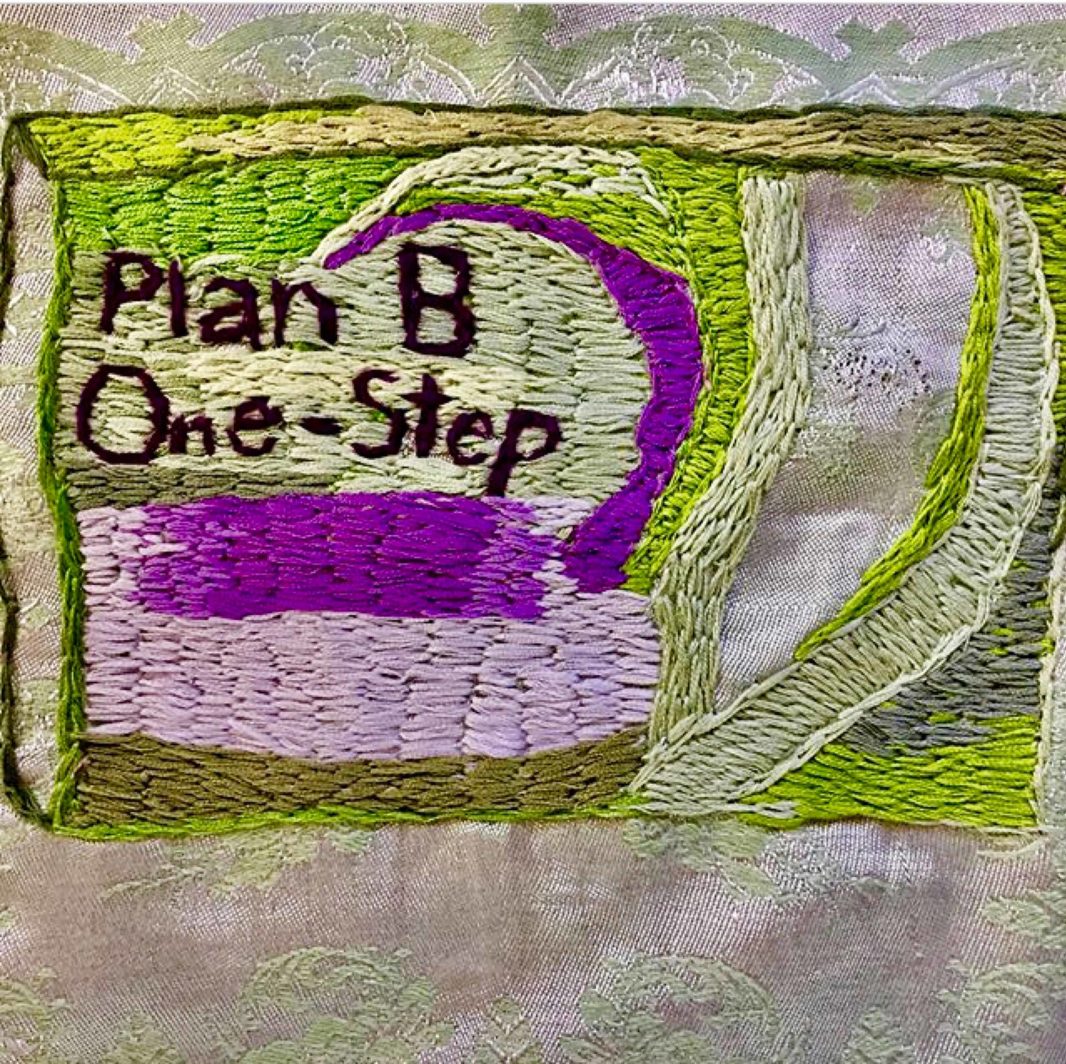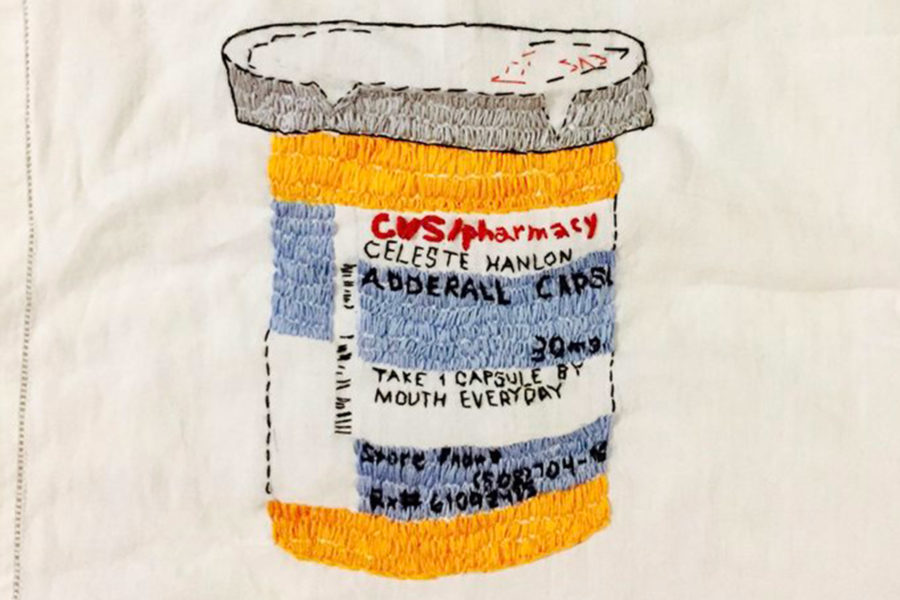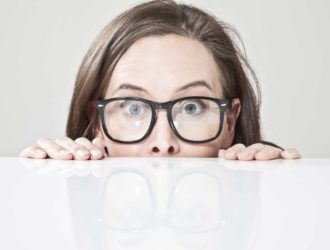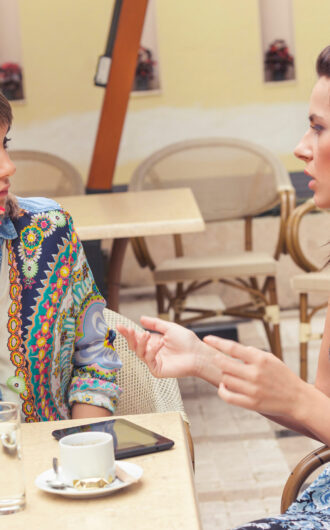Pride Month is fast approaching in June, but you can start celebrating queer experiences early at the Society of Arts + Crafts‘ “PRIED” exhibition, running through June 30. The dynamic show features almost 40 LGBTQ craft artists from around the country.
Curators Izzy Berdan and Dave J. Bermingham of the Boston LGBTQIA Artist Alliance aim to show the diverse experiences the queer community faces.
“In general, it is a queer show,” says Berdan. “But by no means are queer issues exclusively queer. I myself am a person of color, so, yes, my art covers queer issues, but it also covers sex, it also covers politics, it also covers race, and that can be said for the other artists in the show.”
Celeste Hanlon tackles health care in her four embroidery pieces; one is a large-scale piece created on canvas and framed, and the other three are stitched into vintage napkins. Her embroideries depict cheeky, pop art prescription pill bottles.

Photo courtesy of Society of Arts + Crafts
“Plan B” by Celeste Hanlon
Hanlon is the caretaker for her elderly father and was inspired to create this series during the 2016 elections.
“The threat that Obamacare would be wiped out scared the hell out of me,” she says. For such a delicate subject she intentionally chose a delicate medium. “When I wanted to do the health care subject matter, I wanted to have a real fragile, nostalgic look to them, as though it were a thing from the past that is hard to get now.”
Though Hanlon didn’t have gender roles in mind in her medium choice, fiber arts have historically been pigeonholed as “women’s work.” Caregiving, too, is a traditionally female role, which puts women in the direct line of fire for health care policy change.
These histories are all implicitly woven into Hanlon’s intricate art pieces. Hanlon says she’s seen in increase in the popularity of fiber arts, which she suspects is due to feminism, an appropriating of those mediums.
Berdan hopes the show will attract visitors of all orientations and will spark conversations not just about queerness but about humanity.
“This show, although it covers our lives as queer people, it does cover topics that other people can associate with and struggles that they are also having within societal norms,” says Berdan. “And, one does not need to be queer or have queer feelings to understand the struggles of being human.”



 2 min read
2 min read


